Images have the ability to evoke emotional reactions and skillfully convey complex ideas like few other things can. However, in the world of copywriting, you often only have words at your disposal. How can you capture the power of an image in your text? The answer lies in the art of metaphor. In this guide, you will learn how to create potent images in the minds of your readers using metaphors that leave the desired impression.
Key Insights
Metaphors are crucial for using figurative language that adds depth to your text. By skillfully using metaphors, you can evoke emotions and increase the interest of your target audience. There are different types of metaphors, each with different effects: dead metaphors, personifying metaphors, and euphemistic metaphors. These help you present complex or sensitive topics in an understandable and engaging way.
Step-by-Step Guide
Understanding Metaphors
To be able to effectively use metaphors, it is important to understand their definition. A metaphor is a figurative expression that conveys visual content. It allows you to present thoughts and emotions in a non-linear way, so that your readers receive a clear, visual impression.
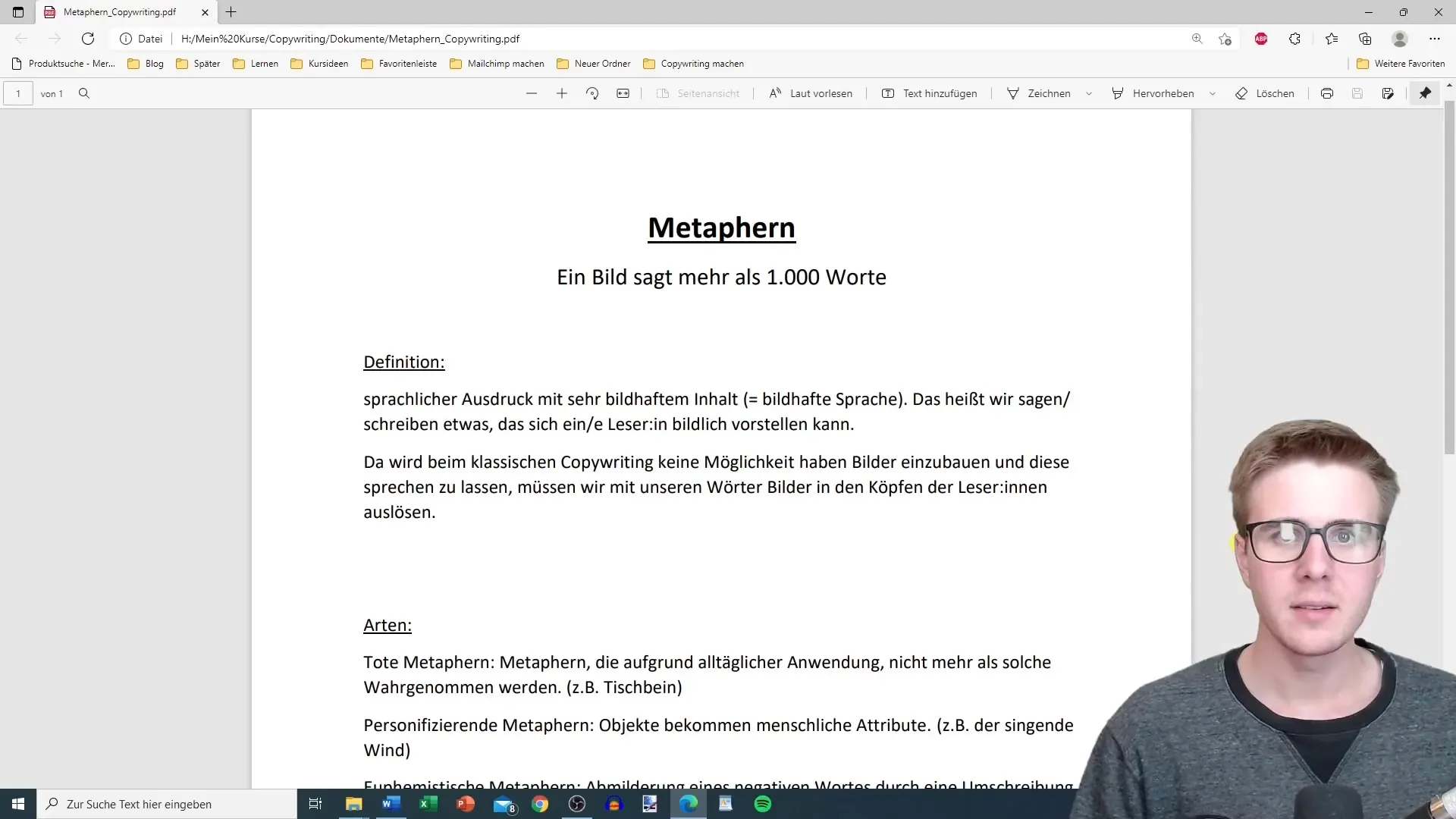
Examples of Metaphors
A practical example of a metaphor is "breaking someone's heart." This figurative language immediately conveys sadness and loss, allowing readers to empathize with the emotions without needing to use the word "grief." A deeper understanding of the concept is created, going beyond mere word reading.
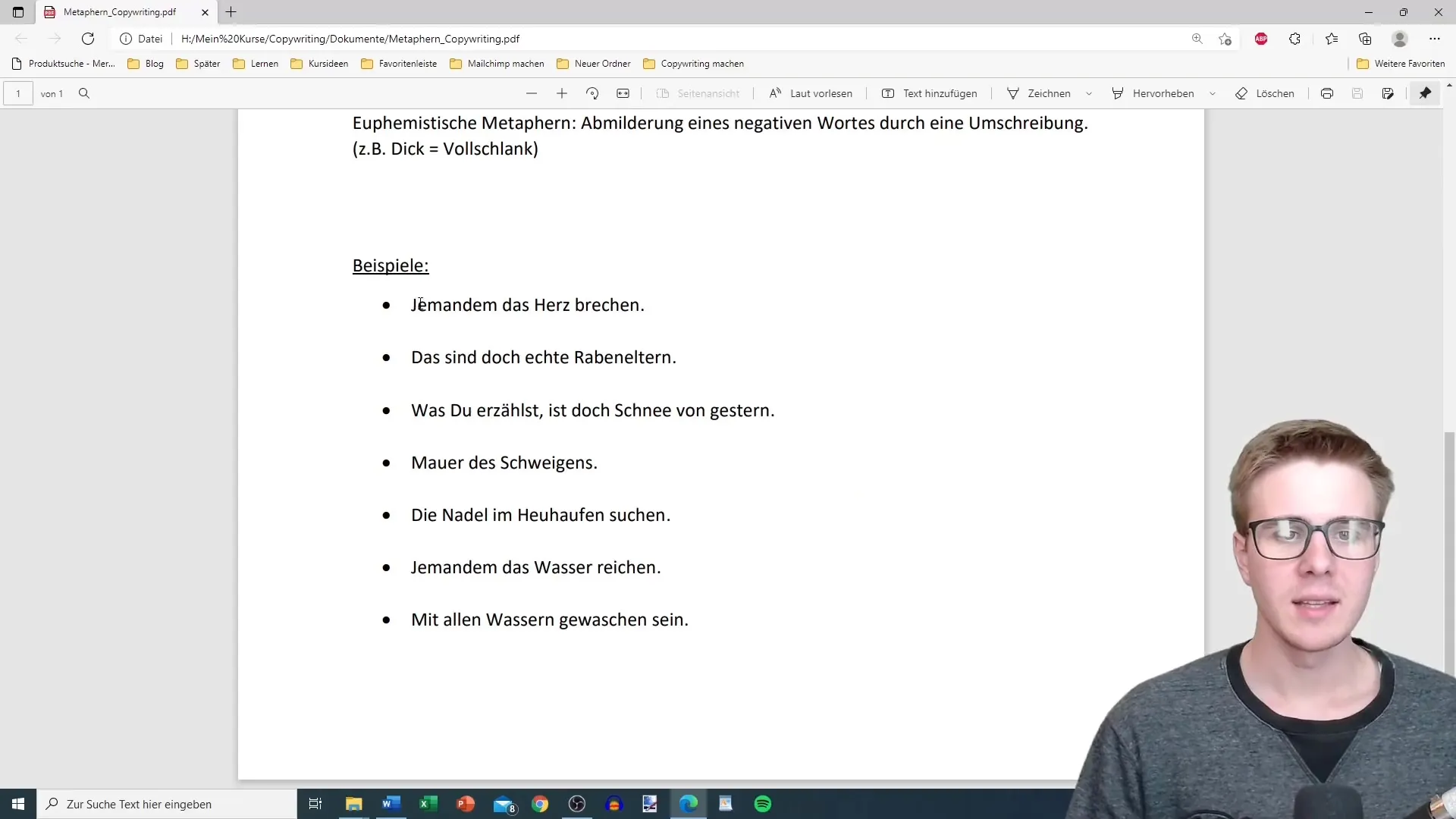
Another common metaphor is "searching for a needle in a haystack." This evokes a sense of frustration and hopelessness, which is intensified by the image of difficulty in finding. This is an effective way to represent a complex feeling simply and directly.
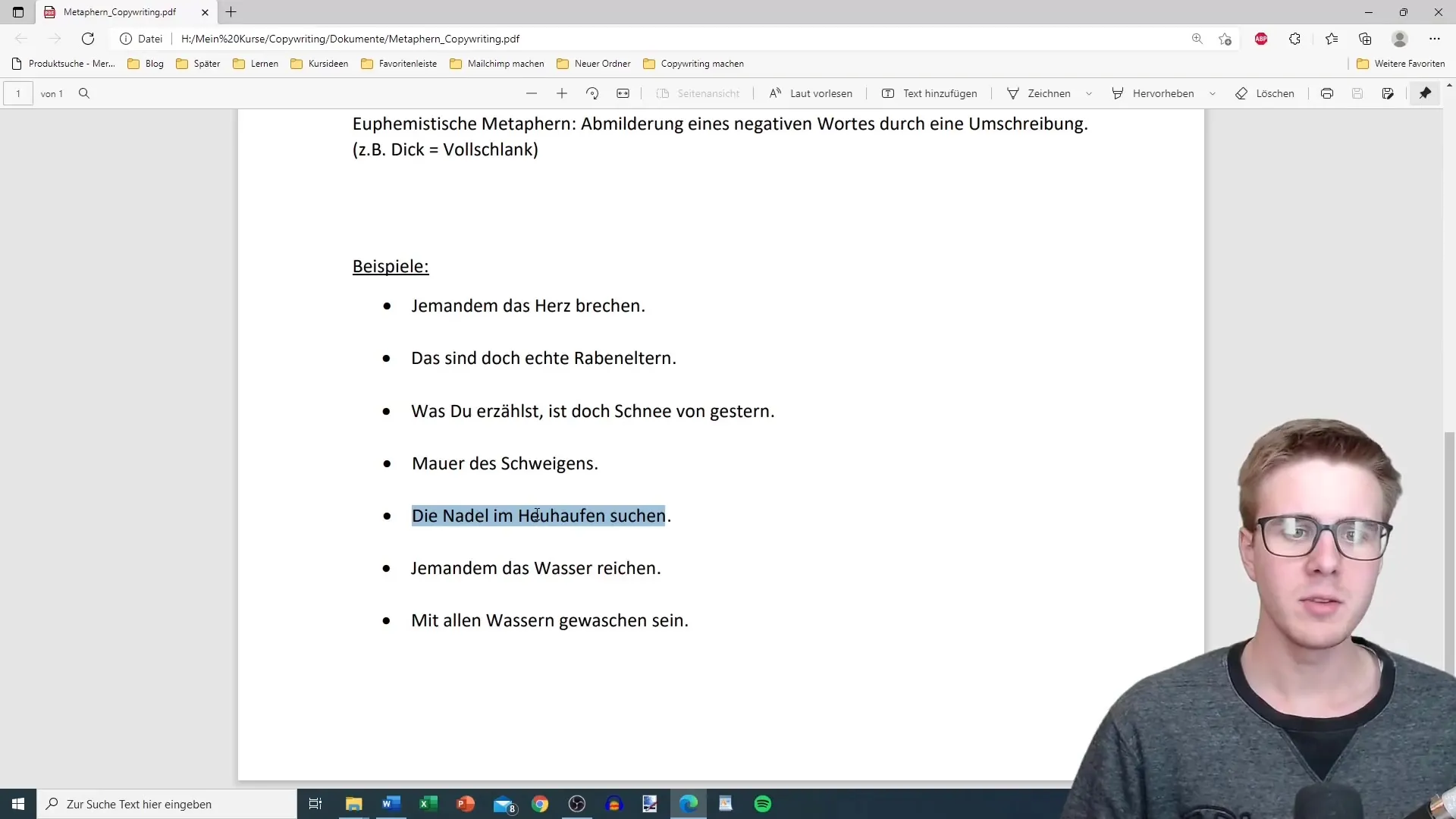
The Power of Figurative Language
Metaphors not only help convey information but also make your texts more vivid. For example, "a wall of silence" suggests isolation and protection without explicitly mentioning the word "protection." Readers visually imagine a wall symbolizing personal separation. Such images enhance engagement and increase the emotional impact of your text.
Types of Metaphors
There are various types of metaphors that have different effects. A dead metaphor is one that has been used so often that it has lost its figurative effect. For instance, the word "glove" in everyday language is no longer perceived as a metaphor.
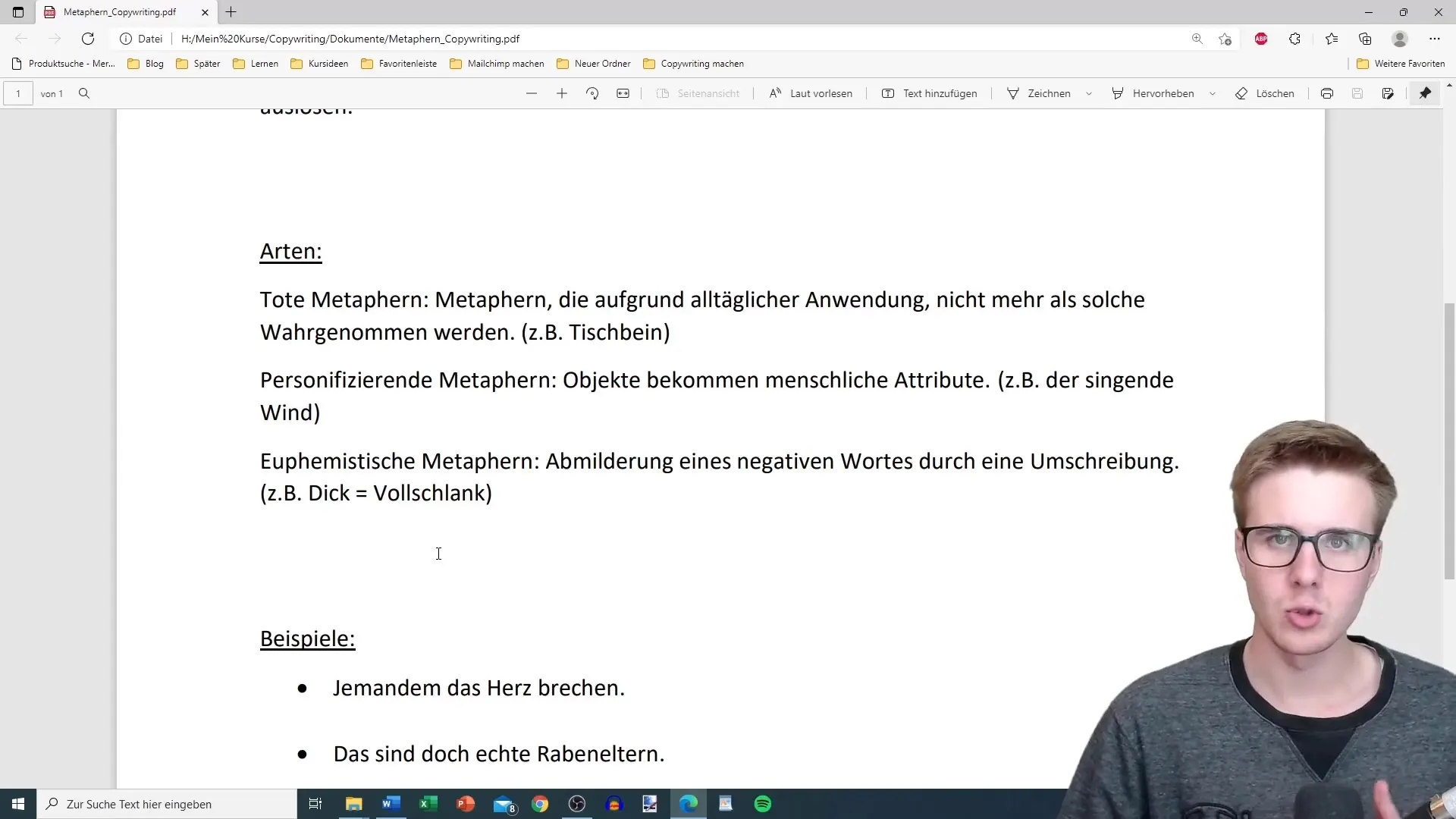
On the other hand, personifying metaphors assign human attributes to non-human objects. For example, one could say: "The smiling sun brightens the day." This makes the reader experience the sun as more vivid and approachable.
Euphemistic metaphors are useful for softening negative terms. Instead of talking about "fat," you could say "full-figured." This allows you to create appealing and more positive connotations in your copywriting.

Practical Tips for Application
If you want to use metaphors in your texts, make sure they clearly convey emotions and ideas. Avoid excessive use and use metaphors strategically to strengthen specific feelings or illustrate thoughts. Also, keep your target audience in mind: What would they find vivid and appealing?
Studying examples and experimenting with metaphors is worthwhile. In this document, you will find additional resources and examples to help you address your audience effectively.
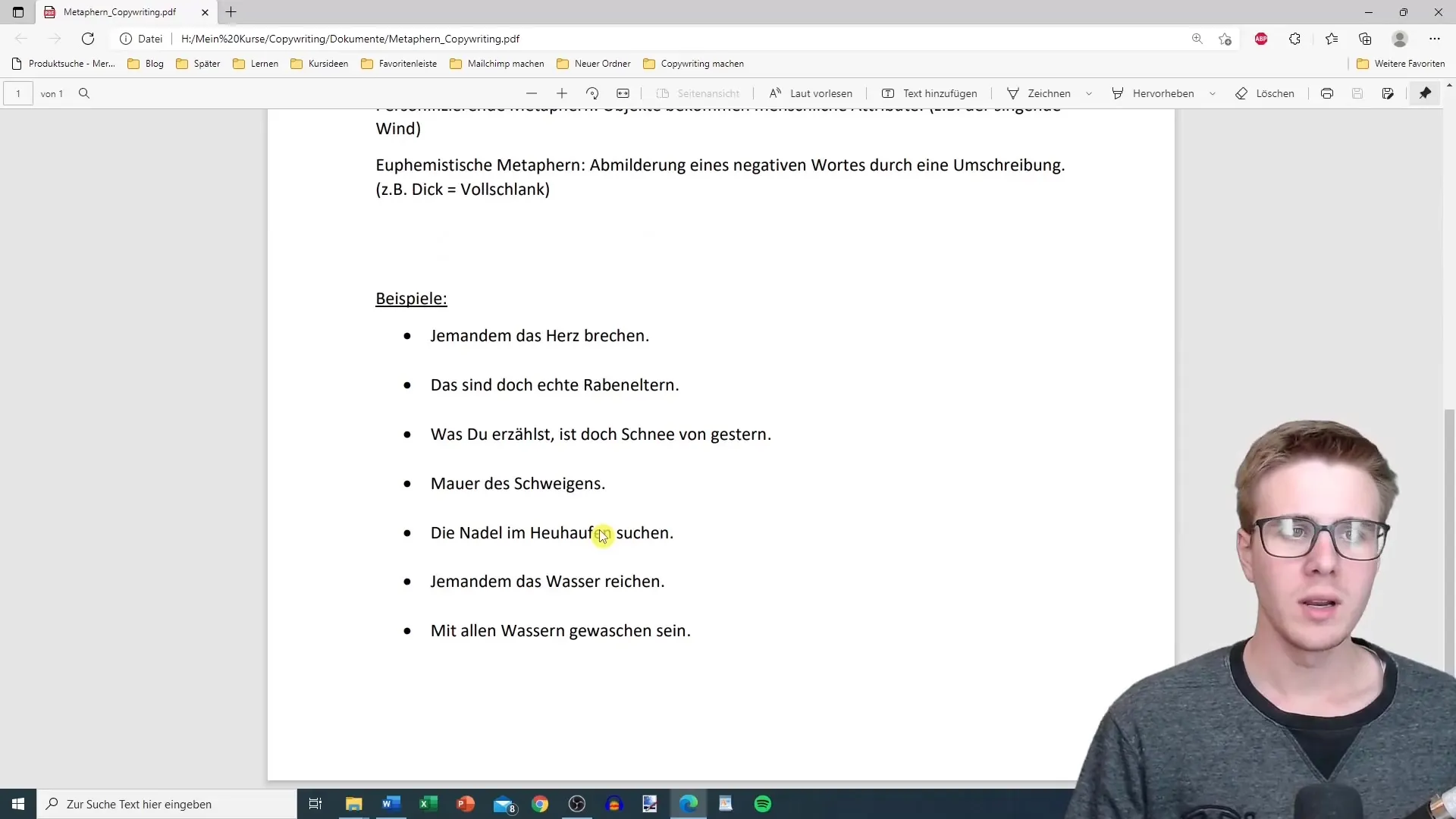
Conclusion
Metaphors are an essential tool in copywriting to reduce complexity and effectively communicate emotions. They help you create a stronger image in the minds of your readers. By using metaphors strategically and creatively, you will improve your text's ability to captivate and influence the audience. Use this guide to refine your writing skills and work with figurative language.
Frequently Asked Questions
What is a metaphor?A metaphor is a linguistic expression that conveys figurative content.
How can you effectively use metaphors?By strategically using metaphors, you can evoke emotions and increase the interest of your target audience.
What is a dead metaphor?A dead metaphor is a metaphor that is no longer perceived as figurative due to its frequent use.
What is a personifying metaphor?A personifying metaphor attributes human characteristics to a non-human object.
How can negative terms be softened through metaphors?Euphemistic metaphors can be used to rephrase negative terms and present them more positively.


